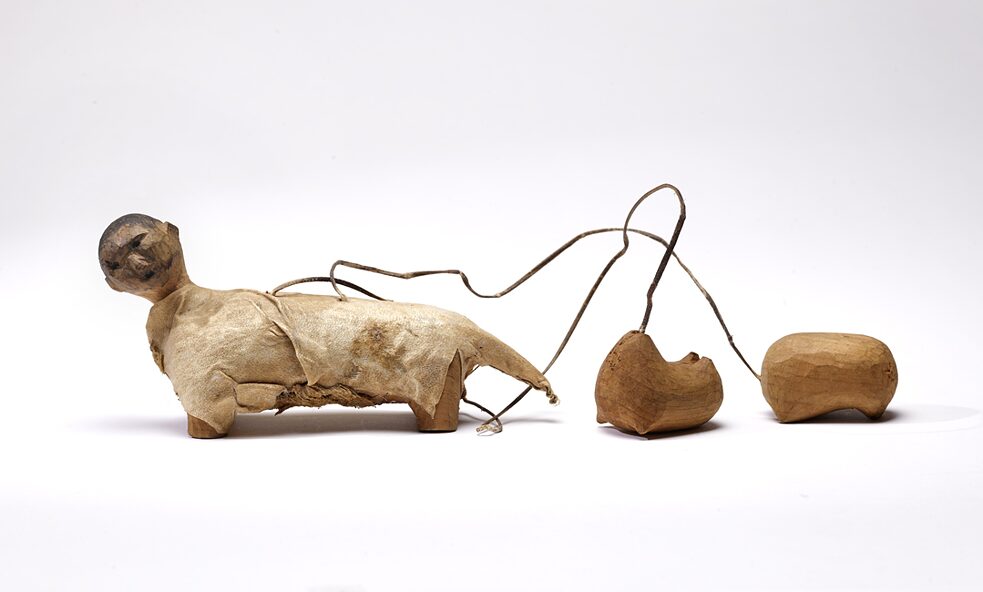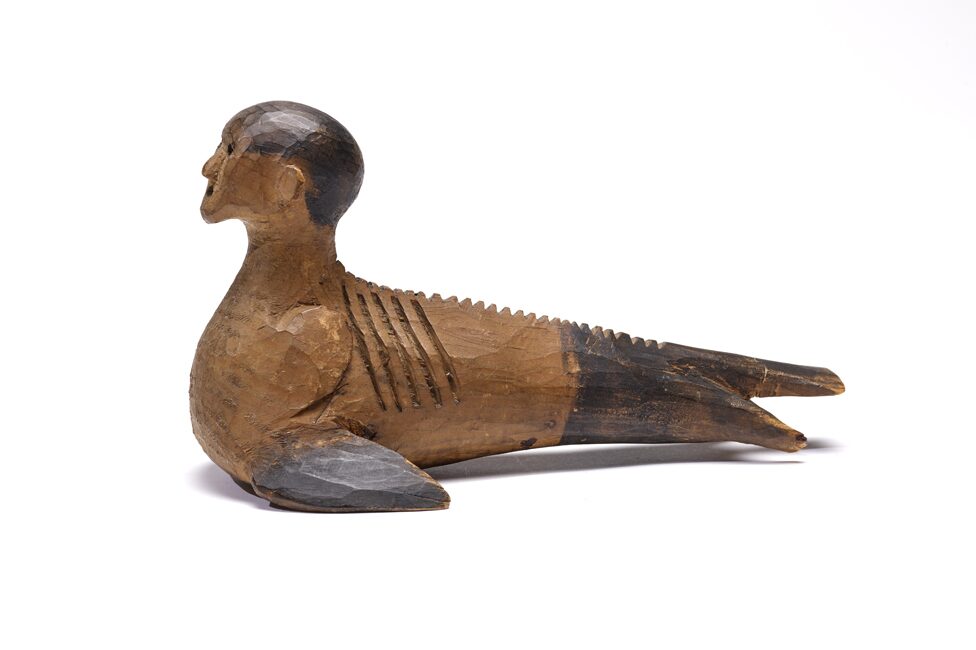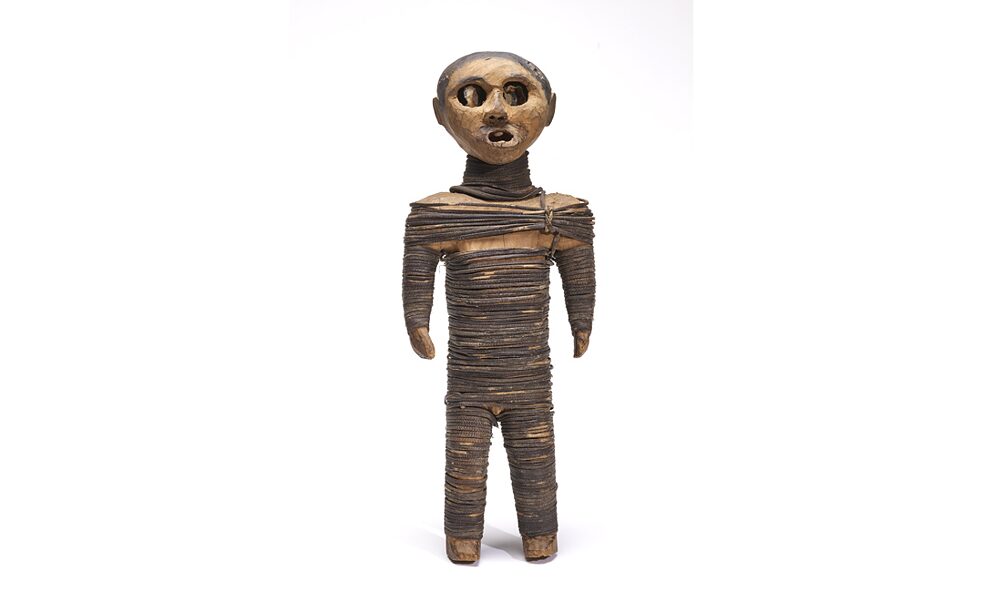Cultural Heritage Repatriation in Greenland From a Tupilak’s Point of View

The restitution of material objects to its land of origin is a sensitive topic between European countries and its former colonies. In the case of Denmark and Greenland, thousands of objects have been repatriated. And yet, is the physical return of an object all that restitution implies? Following the author's story of three “ill-wishing figures” from Greenland suggests otherwise.
During his 1905-1906 stay in a remote East Greenlandic settlement of Ammassalik (today Tasiilaq), the Danish ethnographer and philologist William Thalbitzer (1873-1958) met a local shaman Mitsivarniannga, who created for Thalbitzer three models of tupilak, a mythical creature of ill-wishing and revenge. In the pre-colonial Greenland tupilait (plural form of tupilak) were assembled from wood, seaweed, animal bone, pelt, and human body parts, and animated in a secret ceremony to bring misfortune to antagonised members of the community. Mitsivarniannga’s carvings (one human-like, one a bird and one a harpooned dog) are some of the oldest tupilak figurines. Their creation marks a moment when colonial ethnographic accounts start to describe tupilait as material objects and as expressions of “folk art”, rather than as solely narrative mythical figures.The Restitution Process Begins
Thalbitzer brought Mitsivarniannga’s tupilait to Denmark in 1906, and later gave them to the Museum of Trade and Shipping at Kronborg Castle. The reasons why Thalbitzer did not present them to the Danish National Museum, which would have been the more obvious choice given the extent of its ethnographic collections and expertise, are uncertain. Some speculate that it had to do with personal animosity, and others that Thalbitzer expressed through his gift a deep sentiment he held for the city of his birth.The anecdote has it that the tupilait remained in Kronborg Castle in a storage, quite forgotten, until they were found by chance in 1970s and officially included in the collections of the Museum of Trade and Shipping. An important consequence of Thalbitzer’s decision was that Mitsivarniannga’s tupilait never became objects of post-colonial repatriation claims that Greenland made on Denmark’s many archaeological and ethnographic items, which had been acquired during Arctic explorations, missions and colonial administration. The cultural restitution project called Utimut (meaning “return” in Greenlandic) took place between 1983-1984 and 2001, and it centred on the negotiations by two national institutions, the Danish National Museum and the Greenland National Museum and Archives. The Utimut process resulted in the repatriation of 35,000 items to Greenland (while Denmark retained about 100,000 items).
It also set up a collaborative infrastructure for shared exhibitions, research and education in the future, and resulted in the establishment of SILA, the Arctic Centre at the Ethnographic Collections at the Danish National Museum. In the international forum of the UNESCO institutions, Utimut has been regarded as highly successful, due to a partnership-based, collaborative and mutually respectful process, potentially providing a model to be adapted and implemented elsewhere.
The Utimut Process: a Story of Success?
And yet, viewing the process and outcomes of Utimut from the perspective of unrestituted objects, such as Mitsivarniannga’s tupilait, poses a challenge to this unequivocally positive assessment. One could venture a hypothesis that even if there had been a formal possibility to demand the return of Mitsivarniannga’s tupilait, they would not have been transferred to Greenland. One of the founding principles of Utimut was that both museums were to emerge from the process as holders of coherent and integral collections. One of the stipulations explicitly enabled Denmark to retain those items that were considered important for the documentation of its North Atlantic colonial history.Speaking more broadly, the process was framed by concerted efforts at de-politicising heritage repatriation by putting in its charge a committee of experts, rather than political stakeholders, and it did not include local Greenlandic actors with diverse stakes and investments in the outcome. The process was not accompanied by a broader public debate about the objectives and social significance of heritage repatriation, including its relation to corrective political goals in relation to Danish history of colonial enrichment and extraction.
Restitution is Not Limited to the Return of Material Objects
In his recent contributions to the debates about repatriation of art from European museums to their places of origin, the Cameroonian philosopher Achille Mbembe has argued that it would be a mistake to limit restitution to the questions of physical return of objects. Rather, there is a need for a discussion about what exactly Europe would be divesting itself of through the acts of heritage return, which necessarily involves a debate about the meanings and significance that these objects acquired in the colonial Europe. It would also require a debate about the losses and destructions incurred by the colonised people, historically and in the present, especially as regards that which remains unrepairable and unrestitutable in spite of the acts of return.While it is of course possible, at least in most circumstances, to give back material objects—and let us suspend for a moment the questions of enormous political and institutional resistance in Europe to art repatriation—the radicality of Mbembe’s intervention lies precisely in his attention to less tangible forms of colonial devastation that occurred through, and in parallel to, these objects’ extraction, translocation and inclusion in European museums as exhibits and artifacts. At hand is namely destruction of communal forms of living based on the complementarity of people and things, and the reduction of the latter to the status of inanimate "stuff" subjected to human will and control as property.
From this perspective, the restitution of Mitsivarniannga’s tupilait would mean not only the political opening of the possibility of new repatriation claims, but also the broadening of social debates about restitution beyond the narrow group of scholarly experts. Such debates could invoke narratives and perspectives, such as for instance the oral history of Mitsivarniannga’s descendants, which do not replicate the epistemological binary of persons and things that props the discourse of Western museums.
Confronting Historical Narratives
In Thalbitzer’s diaries and accounts tupilait were signified as products and expressions of unbridled creative and destructive “primitive” energies generated by people, whose culture was under threat of Western civilization. In a text written in 1932, Greenland Now and Then, Thalbitzer explicitly depicted Greenland as a place of struggle between the transformative forces of modernity and what continually, if also precariously, remained untouched by it.Tupilak figures came to signify for the European modern consciousness an access to cultures that would be irreparably lost, but that had survived through these objects’ preservation as museum collections. The Western colonial reception and meaning-making of the tupilak corresponded to what the Greenlandic artist Pia Arke called “ethno-aesthetics”; it was premised on a desire to find and preserve the “authenticity” or “naturalness” of what Europeans, in distinction to their own modern identities, associated with primitivism.
Restituting tupilait (and other heritage items) would demand confronting the historical narratives that enabled extraction and translocation of indigenous wealth and knowledge, as well as generating more attention to ways in which these narratives continue, in one form or another, in present discourses about indigenous Arctic populations.
“Restituting tupilait (and other heritage items) would demand confronting the historical narratives that enabled extraction and translocation of indigenous wealth and knowledge, as well as generating more attention to ways in which these narratives continue, in one form or another, in present discourses about indigenous Arctic populations.”



0 0 Comments